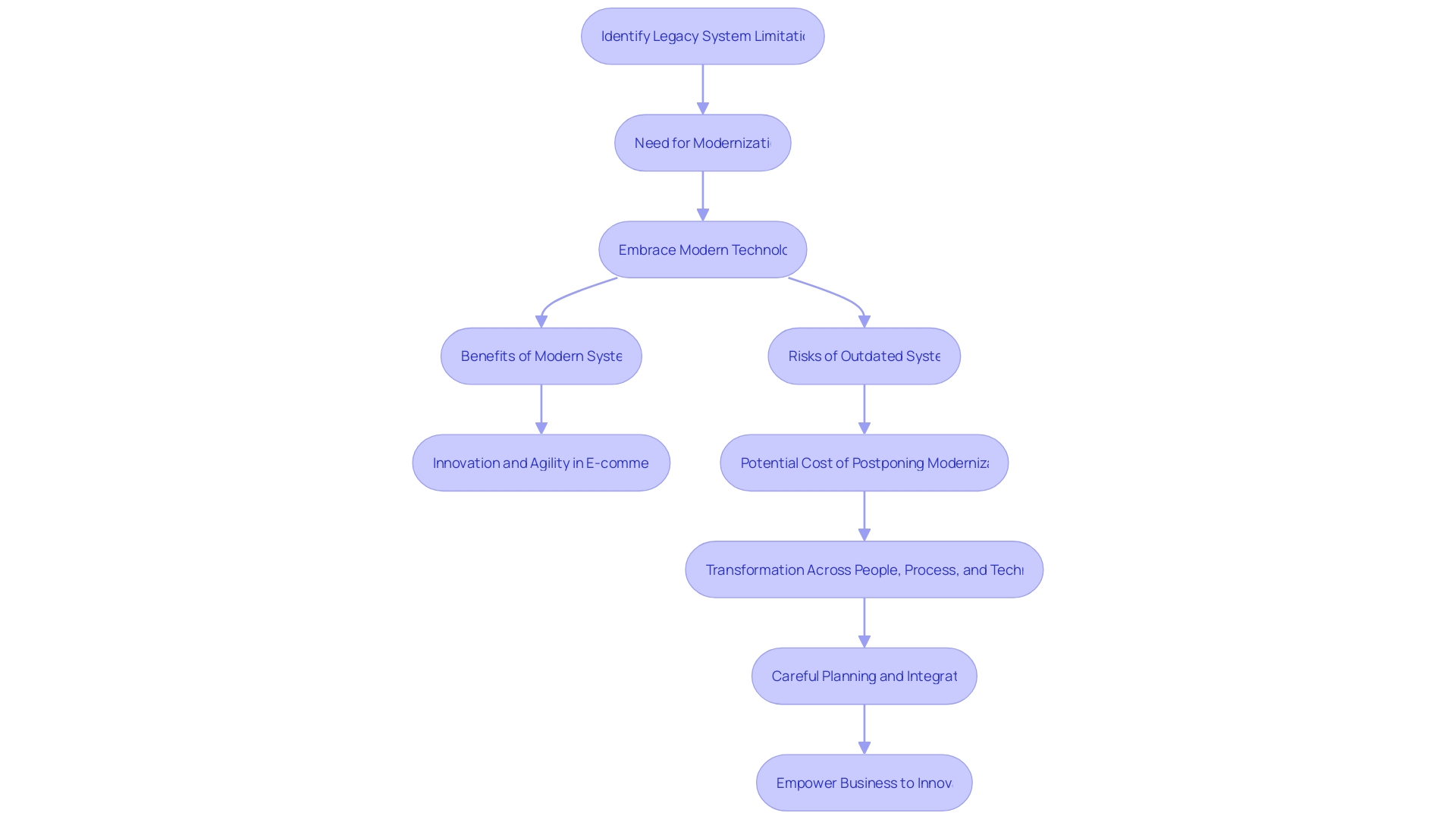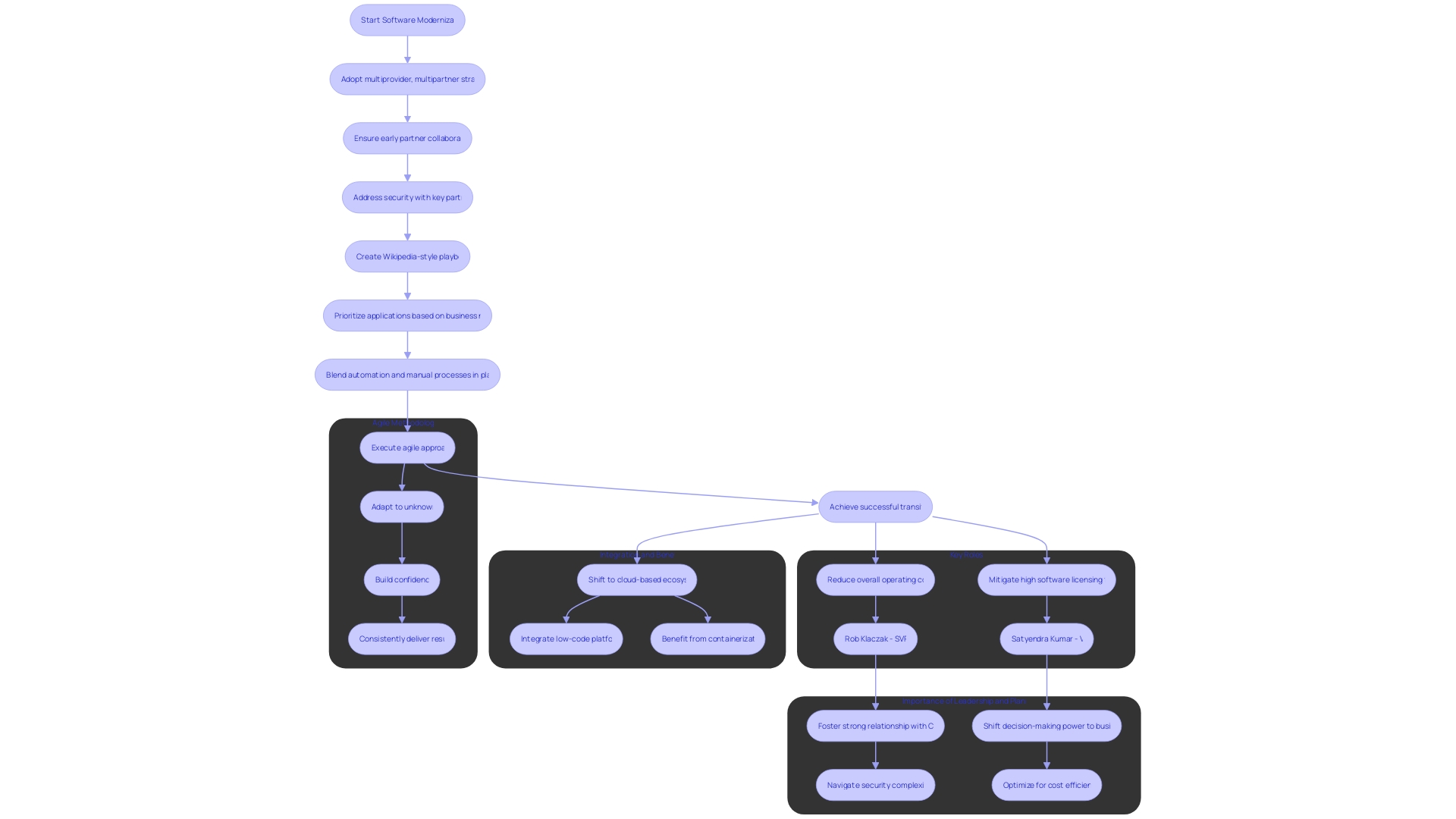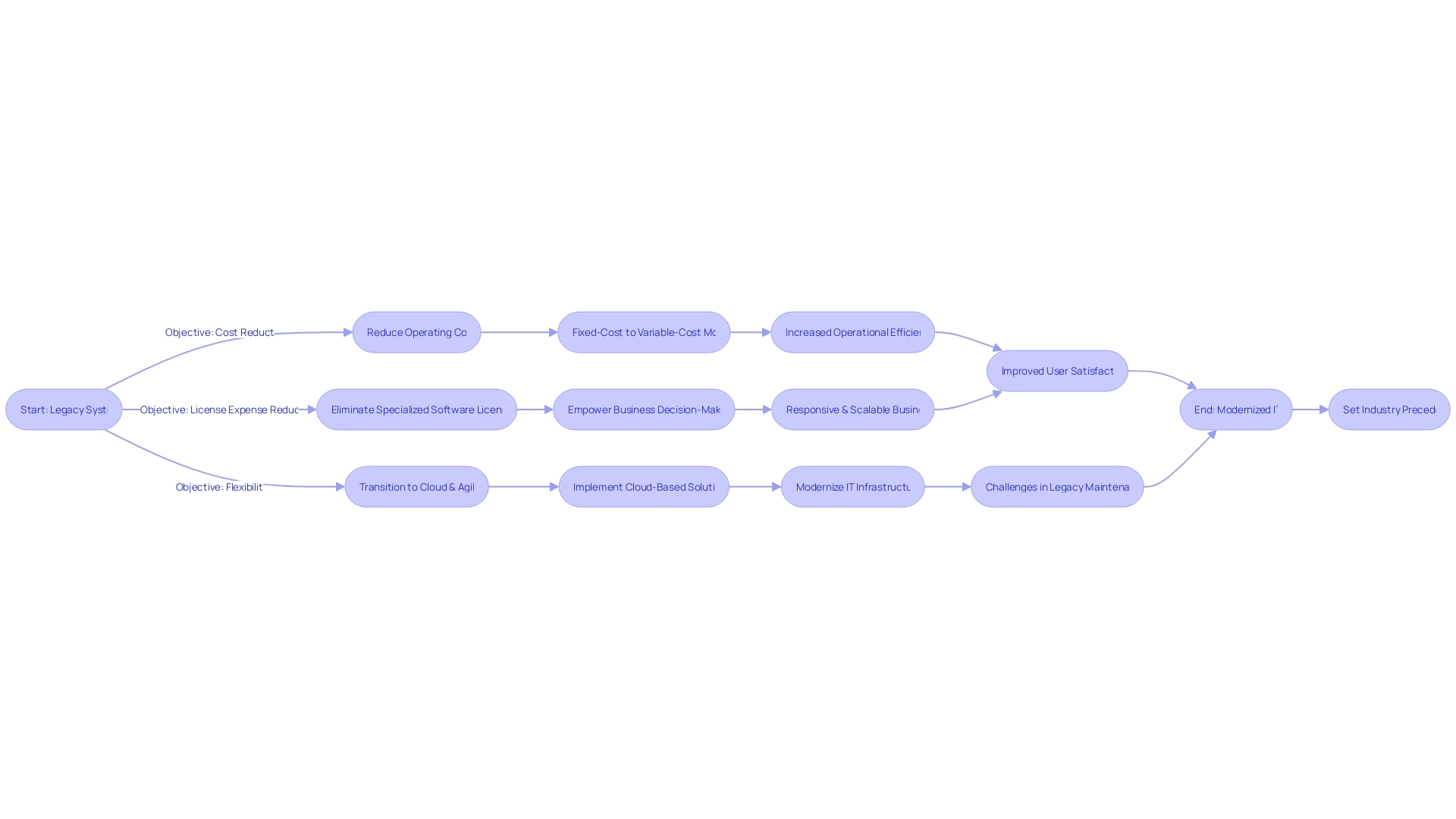Introduction
Facing the challenges of outdated legacy systems, a prominent global e-commerce company realized the urgent need for software modernization. These antiquated systems not only hindered efficiency but also impeded scalability, leading to decreased customer satisfaction and increased operational expenses.
In this article, we will explore the impact of legacy systems on businesses, the challenges they pose, and the strategies and benefits of software modernization. By embracing cloud-based solutions and agile methodologies, companies can overcome these obstacles and thrive in the ever-evolving digital landscape. Stay tuned to discover the transformative power of modernization and the path to achieving operational efficiency and business growth.
Client Background
Facing the ever-increasing demands of the digital marketplace, a prominent global e-commerce company confronted the limitations of their legacy software applications. These antiquated systems were not only inefficient but also lacked the scalability to support the company's growth trajectory, leading to a dip in customer satisfaction and a spike in operational expenses.
Such challenges echo the experiences of Lincoln Financial Group, as articulated by Rob Klaczak and Satyendra Kumar, who emphasized the imperative of modernization to alleviate the financial burdens of fixed-cost legacy infrastructures. Their transformative journey to a cloud-based architecture within a condensed timeframe underscores the urgency faced by enterprises to innovate or risk stagnation.
As the e-commerce sector evolves, companies that cling to legacy systems miss out on advanced features enhancing user experience, like one-click payments and sophisticated data analytics. The result is not just creative stagnation but also a significant loss of business opportunities.
Integration issues further compound this problem, with valuable data becoming siloed, thereby impeding informed decision-making. A survey highlighted that a third of large enterprise leaders struggled to make data-driven decisions due to outdated technology.
Non-compliance with evolving legislation presents another risk for companies using legacy systems. Laws governing technology usage, particularly around data protection, are not static. Outdated systems, designed around former regulations, can lead to legal breaches. In contrast, modern digital systems offer enhanced scalability and performance, essential for maintaining a competitive edge. The transition to low-code platforms, for instance, can reduce software development time by up to 60%, exemplifying the profound impact of embracing modern technology on time efficiency and business agility. Such innovation is critical for e-commerce companies to thrive in a landscape where competitors like Temu and Shein are rapidly gaining market share.

Challenges with Legacy System
Legacy systems, while once the backbone of many successful businesses, can become a significant barrier to growth and innovation. As highlighted in the case of Lincoln Financial, the company faced the challenge of fixed costs associated with their outdated systems, which did not scale with their business needs.
This is a common issue, as legacy systems often fail to meet evolving customer demands and market changes. The result is long development lead times for new features, integration difficulties, and quality concerns—all contributing to a lack of confidence in the software's reliability.
To address these challenges, Lincoln Financial embarked on a large-scale modernization effort, involving the transition of 120 complex systems to a cloud-based environment within a tight timeframe of less than two years. By moving to the cloud, they aimed to reduce operating costs and software licensing expenses, while also adopting a more agile and flexible infrastructure.
The company also sought to shift decision-making power from IT to the business units by pricing technology service consumption, allowing each department to better align their spending with business objectives. In today's digital landscape, the ability to scale both horizontally—by adding more machines to the resource pool—and vertically—by enhancing the capacity of existing machines—is crucial. The cloud environment supports this scalability, offering a full suite of high-quality services that are essential for building robust software products. As the cloud is defined by the services it provides, limiting these services would be akin to removing pieces from a Lego set, hindering the construction of a complete and functional build. Therefore, embracing cloud services is key to overcoming the limitations of legacy systems, ensuring that they continue to drive business success and growth.
Software Modernization Approach
When tackling the intricate task of software modernization, Lincoln Financial Group set forth three primary objectives: slashing operational costs, mitigating high software licensing fees, and shifting to a nimbler, cloud-based ecosystem. Rob Klaczak, a senior vice president, pinpointed the unwavering costs tied to their legacy systems, irrespective of the number of policies managed, as a critical financial burden. The ambitious overhaul involved modernizing 120 multifaceted systems within a brisk span of under two years.
To revolutionize decision-making, Satyendra Kumar, a vice president, spearheaded a shift that empowered business units to tailor their technology spend to their strategic objectives. This approach to modernization is not unique to Lincoln Financial; it echoes a broader trend where businesses are eager to enhance their agility and operational efficiency. By leveraging low-code platforms, companies can bridge the gap between aging legacy systems and contemporary applications, fostering a tech environment that evolves alongside the business.
The integration capabilities of these platforms are vital, potentially reducing software development time by an impressive 60%, while their scalability and performance features address the constraints of legacy systems. Moreover, containerization enables incremental modernization of legacy applications, transforming them into microservices that are more adaptable to current and future business needs. The success of such transitions hinges on robust leadership, strategic planning, and a willingness to adopt an iterative, agile methodology that can navigate the complexities of long-standing systems.

Modernization Strategies Implemented
The transformation of legacy software applications into agile, cloud-based solutions is essential for businesses seeking to enhance operational efficiency and user engagement. By migrating to the cloud, companies like Lincoln Financial have achieved significant cost reductions and operational flexibility.
Rob Klaczak from Lincoln Financial underscores the importance of such transformations, citing their ability to reduce fixed operating costs, alleviate licensing expenses, and foster a more adaptable environment. This is critical for any business managing a vast number of policies, as fixed legacy system costs can pose substantial financial challenges.
Moreover, the modernization process which includes upgrading to the latest technology stacks and revamping user interfaces not only improves the responsiveness and scalability of applications but also significantly boosts user experience. In today's competitive landscape, a compelling user experience is not just a nice-to-have but a necessity for maintaining a competitive edge.
As stated by Joe Cumello from Blue Planet, embracing cloud convergence is pivotal in differentiating operational support systems, curbing operational expenses, and enabling rapid development of innovative business models. Updating legacy systems also addresses performance bottlenecks, maintenance difficulties, and integration complexities. The global industry, valued at approximately $250 billion, is expected to grow exponentially, highlighting the critical nature of these modernization efforts. Data centers in the US, Europe, and China are at the forefront of this change, as they represent the most significant markets. Companies that fail to modernize risk falling behind, as outdated applications may not meet the increasing demands of users or business needs, and they may also present security vulnerabilities non-compliant with current regulatory standards.
Benefits Achieved
Lincoln Financial Group's journey to modernize its IT infrastructure underscores the transformative power of adopting cloud-based solutions and agile methodologies. By transitioning away from a fixed-cost legacy system, which included a staggering 120 complex systems, the company not only significantly reduced operating costs but also eliminated the high expenses associated with specialized software licensing. This shift to a more modern and flexible environment empowered the business to be more responsive and scalable, successfully handling larger workloads and facilitating improved decision-making.
As Rob Klaczak, senior vice president and divisional CIO, and Satyendra Kumar, vice president and executive sponsor, highlighted, the modernization was driven by the need to cut costs and move decision-making power closer to the business side. By pricing the consumption of technology services, each business unit could now tailor its spending to better align with its respective goals. The results speak for themselves.
Lincoln Financial experienced not only a reduction in costs but also a notable increase in operational efficiency and user satisfaction. The modernized applications boasted enhanced responsiveness and scalability, crucial in managing the influx of user traffic and transactions. This led to a better user experience, with modernized user interfaces and improved usability contributing to higher productivity and a competitive edge.
Furthermore, the modernization initiative directly addressed the challenges of maintaining legacy systems, which often require specialized skills and rely on outdated infrastructure. The company's proactive approach to modernization, including the democratization of data collection and information sharing, was instrumental in achieving these results. By prioritizing applications based on business needs and blending automation with manual processes, Lincoln Financial set a precedent for others in the industry considering similar modernization efforts.

Conclusion
In conclusion, legacy systems pose significant challenges to businesses, hindering efficiency, scalability, and customer satisfaction while increasing operational expenses. However, by embracing software modernization through cloud-based solutions and agile methodologies, companies can overcome these obstacles and achieve operational efficiency and business growth.
The case study of Lincoln Financial Group exemplifies the transformative power of modernization. They reduced costs, eliminated high software licensing fees, and improved decision-making through IT infrastructure modernization.
This resulted in increased scalability, enhanced user experience, and a competitive edge. Benefits achieved through software modernization are substantial.
Companies can experience cost reductions, improved operational efficiency, and higher user satisfaction. Modernized applications offer enhanced responsiveness and scalability for increased productivity.
To thrive in the digital landscape, businesses must embrace change and leverage cloud-based solutions and agile methodologies. Prioritizing strategic planning, robust leadership, and an iterative approach are crucial for navigating the complexities of legacy systems. In summary, software modernization is essential for businesses to thrive in today's digital landscape. By embracing cloud-based solutions and agile methodologies, companies can achieve operational efficiency, cost reductions, improved scalability, enhanced user experience, and a competitive edge. Embrace change for a transformative journey towards success.





